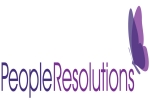What the customer wants
When you go to a shop for the first time it can be confusing and off-putting if goods are difficult to locate or do not follow your sense of where things should be. Over helpful, pushy staff who assess your needs too quickly and impose upon your browsing also contribute to a feeling of alienation and bad fit. Parties to a dispute, grievance or interpersonal conflict are often first time users of resolution services such as conflict coaching, mediation, independent investigation. They will find out what they can, and arrive new to the service access point with a range of needs and perceptions about the ‘goods’ they will receive. Firstly ensure that what you offer – a single mediator, or team of multi-talented conflict coaches – is efficient and effective. The key is to recognize that there are different types of customers out there and not all benefit from the same approach. There are mainly three levels of conflict and matching resolution services. To continue the shopping metaphor, imagine resolution services as a small department store.
Customer Fit
- The first point of access is the ground floor early resolution department – self-service with specialist help available. People are expected to talk through their differences with respect and seeking win/win resolutions. The parties are in control and are encouraged to have successful difficult conversations which do not escalate up to the next level. Interpersonal conflicts, misunderstandings, disputes with low to middle level hostility / aggression should be encouraged to resolve at this level – possibly with some mediation / facilitation.
- On the middle floor facilitated resolution is the norm – easy access to specialist range of practitioners (mediators, conflict coaches, team facilitators). This level is for when you need a little more structured help but it is still all about dialogue. Often potential users will consider using the self-service ground floor but not have the confidence to meet and talk face to face without help. Sometimes when communication has deteriorated outside help is needed to get a resolution conversation back on line. Once people get to the middle floor they are encouraged to put all their effort into settling here. They rarely need to move on up to the top floor.
- The top floor is much more formal. People no longer talk to one another, but hand their conflict to someone else to investigate. At this level formal resolution is provided by skilled, trained investigators and adjudicators – accessible for the most serious situations or after unsuccessfully trying the ground / middle floor. Occasionally conflicts go back down to the middle floor for resolution as the subject matter is not too serious and the parties choose belatedly to have a dialogue, probably with the help of a mediator. Issues involving misconduct, misuse of power should be fast tracked to this level.
Resolution architects (See ABC Guide to Workplace Conflict Resolution) should design in and build provision at each level.)
Getting the customers in

Whether you are an individual in an SME or part of a wider team of people expected to resolve conflict you need to find out what your customer wants and match the resolution to the need. We encourage people to raise issues and get them solved, but some organizations are rightly worried about being under capacity if too many customers come in. Get your provision right. Modest over capacity is always best. You will need good front end signposting and branding which will encourage people to come in and find out more: lists, maps and signposts; inserts in policy infrastructure; first class overview information at the entry point; web site copy with examples of services, case studies.

People who may come in contact with conflict as a third party also need briefing e.g. HR and other call centres; EAPs, team leaders. Sometimes access may be arranged via an advisor or ‘navigator’ who can help parties choose the level that is right for them. Ideally all managers should be able to run through the basics of all three levels and be able to steer parties to the next stage. Don’t forget an over-pushy customer advisor is likely to switch people off.
John Crawley – Director, People Resolutions
T: 0845 600 8851
W: www.peopleresolutions.com
Latest blog posts
- Is There a Santa Clause?
06 / 12 / 2023
- Lend Us a Hand!
22 / 11 / 2023
- What Happens When There is a Clash in Protected Characteristics?
17 / 10 / 2023
- Encouraging a Healthy Workforce 2
21 / 09 / 2023
- Encouraging a Healthy Workforce
23 / 08 / 2023
- What a Disaster - (But We Have a Cunning Plan!)
20 / 07 / 2023
- It’s Time We Stiffened the Sinews
14 / 06 / 2023
- Why Is It So Important to Develop Emotional Resilience?
16 / 05 / 2023
- When is a discretionary bonus not discretionary?
20 / 04 / 2023
- Recovering Training Costs 15 / 03 / 2023
